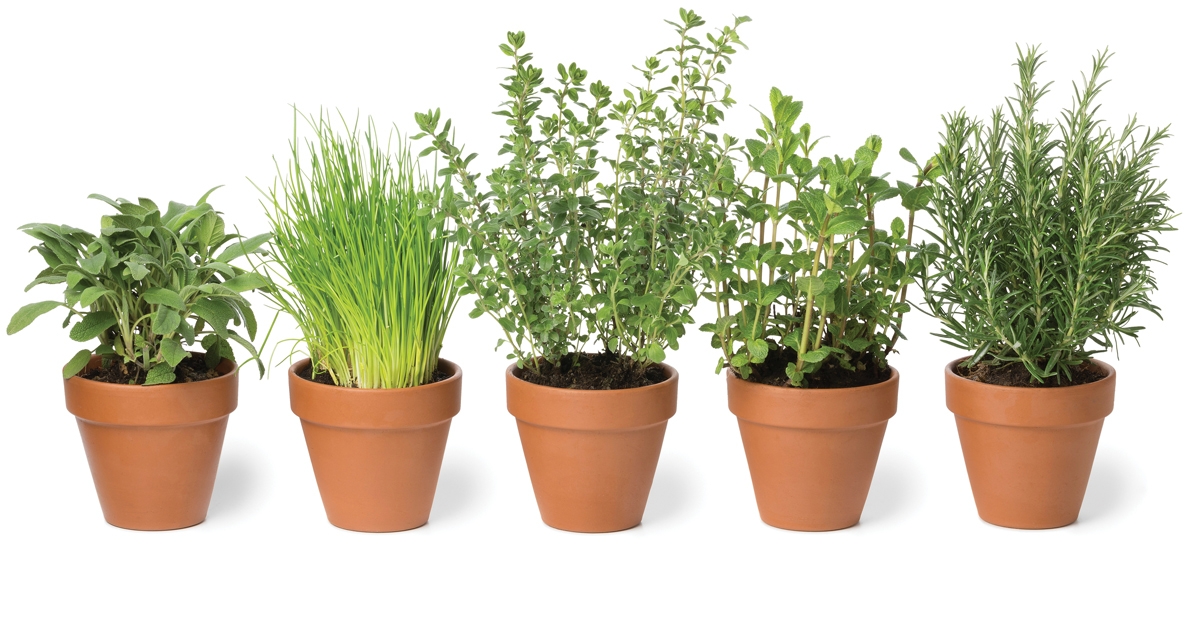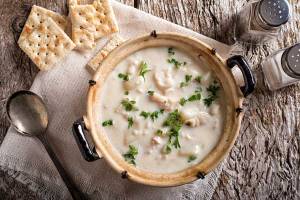When I discovered a rack of small-sized pots with a different herb growing in each one on the deck of a friend’s home, I was mesmerized by the different fragrances, textures, sheens, and leaf sizes. From that experience, the whole world of growing herbs opened to me.
Although my herb garden isn’t as eye catching and orderly as my friend’s, I now grow many different herbs. I have found that sage, oregano, both original and garlic chives, lemon balm, thyme, lavender, mint, and tarragon grow as perennials in our area.
To grow these plants, I have received starts from friends, or I have purchased starts at the greenhouse.
I have found that the thyme plant needs to be replaced about every two to three years, but the others live on.
Most perennial herbs do best on the south or west side of a building. When planting herbs, don’t crowd, and give them room to expand. They prefer a soil PH of 6 or 7. Most herbs, except basil, tend to be drought-resistant, but when you water, it is best to water early in the day, so the foliage will dry. Be sure to water the soil, not the plant.
Both the chives and mint can be a real menace if not kept under control. Chives, especially, are rascals. After they produce their beautiful lavender flowers, be certain to cut them off and dispose of the blooms. Even after you do that, they will spread outward, and you will need to dig out the extra plants routinely.
The most popular mints are spearmint and peppermint. These plants put out runners and can easily take over an area. To confine mint, cut out the bottom of a plastic bucket, and bury it to near the top. Fill it with soil, and plant your mint in the bucket. Success! You are now the master of the mint plant.
Parsley is a biennial plant. Most people are familiar with curly, moss-leaved parsley, but Italian flat leaf is easier to wash before serving. Because it takes up to four weeks to germinate from seed, many gardeners become impatient and opt to purchase plants.
The gardener should keep the blossoms clipped the second year to prevent the plant from going to seed. Once the plants get started, clip the nutritious parsley whenever needed. Also, dry parsley for winter use if you don’t take your plants indoors.
Jennephyr Reiche-Sterling of Earth Heart Spirit in Sun River, Mont., recommends ginger and turmeric as unusual herbs that need to be kept in pots for easy transfer from the warmth of the home or greenhouse to the porch or yard in the summer.
“I dry the root and grind it into a powder that provides a unique flavor in food,” she said.
You can grow garlic, basil, cilantro, and dill right in the garden. Plant garlic needs to be planted in the fall—usually late September or early October, so it can get started over the winter. Harvest it in August when about two-thirds of the stem has dried.
I have started basil in pots in the house, in the cold frame, and directly in the garden. Sowing the seed directly in the garden makes for too slow of growth during the summer, and the small plant can easily be overtaken by weeds.
The plant with its beautiful dark-green leaves is highly susceptible to frost. Transferring the plant from the cold frame to the garden works best, but if you don’t have a cold frame, either purchase bedding plants or start in the house. I dry large quantities of basil and also use it to make pesto.
Coriander was likely an herb before someone discovered the fragrant leaves, cilantro, that add so much flavor to cooking. Cilantro grows well in the garden, and you can pinch regularly. It has the tendency to go to seed during the hot summer days. If you don’t pick the seeds, you will have cilantro coming up all over your garden.
I must have planted dill once in my 30 years of gardening, because it has been coming up here and there ever since I started. When I weed, I save out a few plants to cut the fragrant leaves for cooking and collect the seeds and leave them in drying pans for a few days.
I purchase rosemary and cutting celery every year. I find that one plant of rosemary provides enough of the poignant herb for an entire season.
Cutting celery leaves have become my favorite herb, and I use them frequently. I prefer dried celery leaves to parsley for flavoring soups. The ants also share my appetite for the plant and will take over, so I have given up planting them directly into the garden. I buy four plants from the greenhouse and plant two each in large pots.
Cutting celery seems to grow well in a north-side shaded area.
Cut off the ribs and then pinch off the leaves to use or to dry. Use the ribs in cooking during the summer, although they are tougher than commercial celery.
When cutting an herb plant, take only a third of the plant and leave two thirds, to promote regrowth.
I have a dehydrator, but when herb leaves dry, they flake and tend to drop down into the tray crevices. A primitive method works best.
Wash your herbs, spread them in a shallow tray, and cover them with a screen. Place them on a flat surface located in the heat but out of the wind that can blow fine dirt into the tray.
Depending on the thickness of the herb leaves, they will dry quickly during July when it’s hot. In August and early September, it takes a few days longer.
Whether fresh or dried, herbs enhance your cooking. When you use home-grown herbs, you know freshness is at its optimum. Your own herbs offer fragrance, flavor, and nutrition and are free of pesticides. Herbs grown and preserved this way offer you the outcome of great food. MSN
A multifaceted interest in Montana people and their communities keeps Suzanne Waring looking for topics to research in old newspapers and books and people to interview. During the busy times of her first career, Suzanne Waring wrote, “I raise a garden no matter what.” That statement is still true during her second career as a writer.












